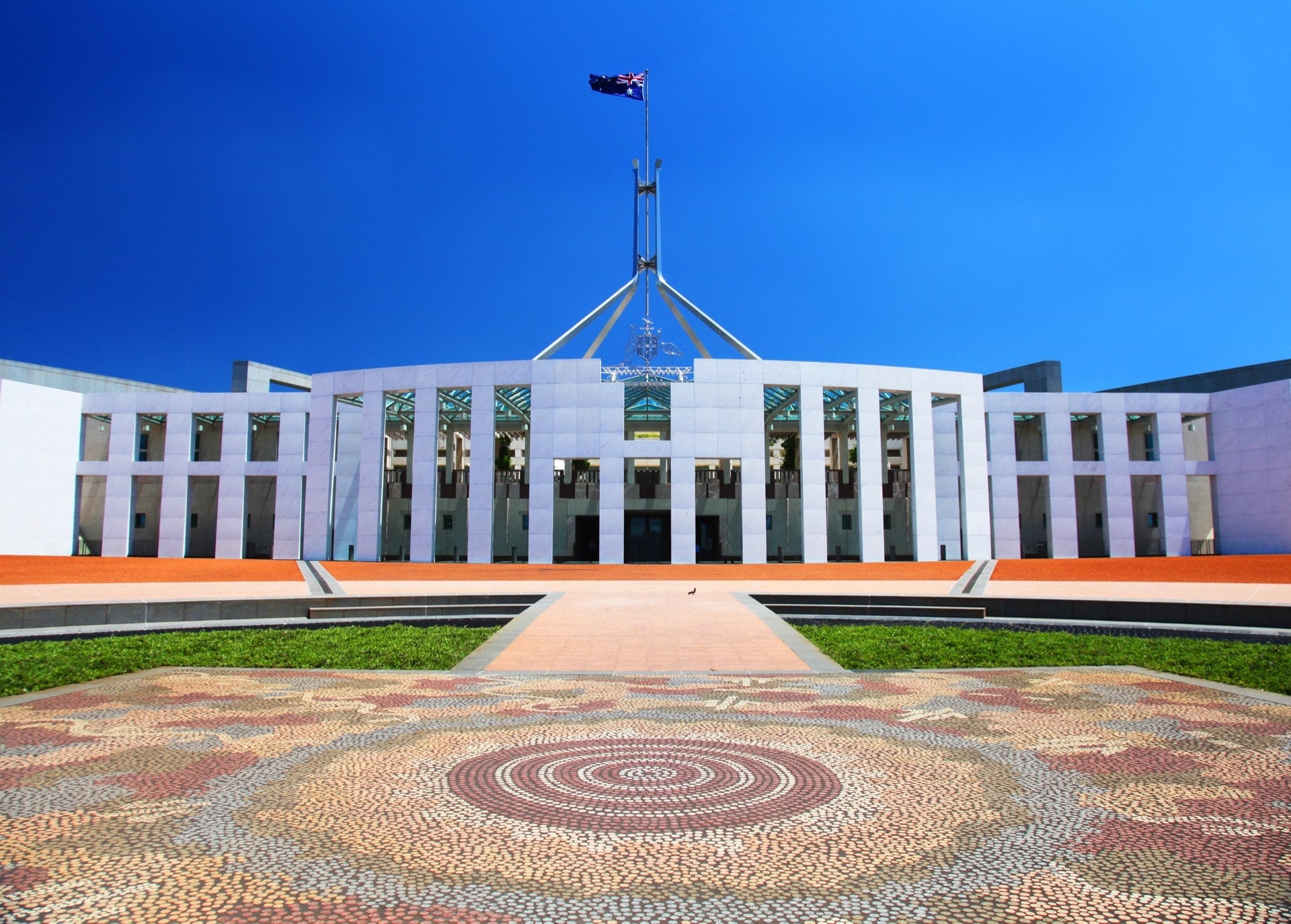As any keen observer of Australian politics would know, a lot can happen throughout a political year. 2020 appears to be no different with many rumours and predictions currently floating around inside the Canberra “Bubble”.
With this in mind, the team here at Nexus has analysed the political landscape and made our predictions for the 2020 political year.
ALL EYES ON WHETHER THERE WILL BE A BUDGET SURPLUS
During the 2019 Federal Election campaign and in the months following, a delivering a budget surplus in the 2019/20 Financial Year was one of the Coalition Government’s key economic policy commitments, with the Federal Budget in deficit since the 2007/08 Financial Year.
The Mid-Year Economic and Financial Outlook (MYEFO) already raised some concerns for the Government’s promise of a Budget surplus, with the predicted surplus for 2019/20 downgraded from $7.1 billion at the Budget to $5 billion.
In addition, the summer has seen Australia ravaged by bushfires, which has required substantial unbudgeted financial support from the federal government. This has resulted in the Prime Minister announcing $2 billion of funding for the establishment of the National Bushfire Recovery Agency (NBRA) within the Department of Home Affairs.
Further to this, there will be a Royal Commission into the bushfires, as well as growing pressure from a range of sources for additional action on prevention and the recovery. Combined, these bushfire ramifications may result in a greater impact on budget surplus.
Our prediction: Despite all of these additional pressures on the Budget, we are predicting that the Morrison Government will try and deliver a much-anticipated Budget surplus in the 2019/20 Financial Year, although it may be much smaller than initially predicted. We believe that the Budget will be framed around the regions with additional initiatives on drought mitigation, water and bushfire recovery.
All eyes will be on the Treasurer, the Hon Josh Frydenberg MP, when he delivers his second and most important Budget in Canberra on Tuesday, 12 May 2020.
A POSSIBLE MINISTERIAL RESHUFFLE
With the Prime Minister, the Hon Scott Morrison MP, delivering an election victory for the Coalition in his own right in May 2019, 2020 will provide the opportunity for him to reaffirm his authority by undertaking a ministerial reshuffle. This would be the Third Morrison Ministry since taking office in 2019.
Rumours of reshuffle and further retirements were common around Canberra throughout the latter part of 2019, with many senior ministers still retaining the same roles they held under former Prime Ministers. For example, the Hon Greg Hunt MP was appointed Minister for Health in January 2017, Senator the Hon Mathias Cormann was appointed Minister for Finance in September 2013 and the Hon Peter Dutton MP was appointed Minister for Immigration and Border Protection and subsequently Minister for Home Affairs in December 2014.
It is known that a number of Ministers are keen for some changes to their roles and there is considerable talent on the Coalition backbench that are keen to contribute. The Prime Minister has shown with his substantial and continuing changes to the public service that he is committed to reform and change in this term.
Our prediction: Whether the ministerial reshuffle is minor or major overhaul, one is likely be on the cards in 2020. We are predicting a potential reshuffle by the end of July 2020.
GENERATIONAL CHANGE FOR LABOR
While it is likely that the Prime Minister may implement a ministerial reshuffle this year, Labor may also see generational change continue throughout its ranks in 2020. Towards the end of 2019, rumours that senior Labor MPs and Senators would be leaving the Parliament became louder, with a number of senior members of the Shadow Cabinet reportedly considering their future.
Many of Labor’s Shadow Ministry have been in Parliament for over a decade, with a number of members serving in the Parliament for nearly 20 years. With Labor facing another three years in Opposition, a number of these long serving members may be reconsidering their long-term careers and whether they believe Labor can win Government in 2022.
Although it is unlikely that there will be a large number of departures, it is possible that some senior members of the Labor team decide to move on and allow for generational change and fresh ideas in Labor before the 2022 election.
Our prediction: Nexus is predicting that we will see a number of senior Labor frontbench members retire in 2020, resulting in some fresh faces in the Opposition Leader, the Hon Anthony Albanese’s Second Shadow Ministry.
CHANGES AT THE COAG TABLE?
2020 is also an important year for Labor on a state level, with three of the five states and territories, currently held by Labor, the Northern Territory, the Australian Capital Territory and Queensland, going to elections throughout the year.
Northern Territory Election – 22 August 2020
The Northern Territory is first up, with Territorians heading to the polls on 22 August 2020. Interestingly a by-election is also scheduled to take place early in 2020 with Labor MLA, Mr Ken Vowles, resigning from the Northern Territory Parliament on its last sitting day in 2019.
The by-election may serve as an indicator of the strength of the Labor NT Government, with Chief Minister, the Hon Michael Gunner under some pressure due to his handling of the economy and crime in the Northern Territory.
Despite this, the Country Liberal Party only holds only 2 of the 25 seats in the Northern Territory Parliament and the current Leader of the Country Liberal Party and NT Opposition Leader, Mr Gary Higgins has stepped down and will not contest the NT Elections in August.
The Country Liberal Party, who will need to win 13 of the 25 seats, would need to see significant swings at the election to see a third new government in as many elections.
Our prediction: Although the Northern Territory has been notorious for swinging between the Country Liberal Party and Labor in recent years, we are currently predicting that the Gunner Labor Government will win a second term in August 2020, despite the instability surrounding the Government.
Australian Capital Territory Election – 17 October 2020
Residents of the Australian Capital Territory will be next to head to the polls on 17 October 2020, where the ACT Labor Government will be seeking an incredible sixth consecutive term. Currently, Labor in the ACT governs in minority, relying on support from the two Greens members in the Legislative Assembly.
Federally, the ACT has always been traditionally a Labor stronghold, however, this doesn’t typically translate to the ACT on a territory level. The Liberal Party has traditionally performed strongest in South Canberra, while Labor and the Greens perform better in Northern Canberra.
At this stage, it is unclear whether the Liberal Party will have the numbers to win Parliament for the first time since 1998. In 1995 and 1998, the Liberals were able to win power thanks to the support of Independent members. Currently, no independents sit in the ACT Legislative Assembly, making the Liberal Party’s path to power more difficult.
Whatever the result may be, it appears that minority government will be the most likely outcome, with only one election producing a majority government in the ACT’s history.
Our prediction: Despite the ACT being a Labor stronghold at federal level, ACT state elections are much closer affairs. This one should go to the Liberal Party, but currently we still think that the Labor can just retain Government in October 2020 in coalition deal with the Greens, giving Labor a sixth term in power.
Queensland State Election – 31 October 2020
Finally, Queenslanders will be going to the polls on 31 October 2020, with Labor Premier, the Hon Anastasia Palaszczuk MP seeking a third term in power, following Labor’s initial victory in 2015. This election will mark the first time that Liberal National Party Leader, Ms Deb Frecklington MP will be contesting an election as leader.
In addition, Pauline Hanson’s One Nation (PHON) will also be a key factor of whoever wins the Queensland Election, with the party’s preferences influencing the results of four Brisbane-based seats. Add in Katter’s Australia Party (KAP), and the LNP will continue to have competition in winning votes from those conservative voters.
Meanwhile, Labor and the LNP will continue to face competition from the Greens in inner city seats, following a number of close contests. The most notable of these saw the Greens pick up their first seat in the Queensland Parliament, with Mr Michael Berkman winning the LNP seat of Maiwar in 2017.
For the Ms Palaszczuk and Labor, it will be interesting to see if their poor showing federally at the 2019 Election will translate to a swing against the party on a state level.
Our prediction: We are predicting that Labor will hold Queensland. This would make Premier, the Hon Anastasia Palaszczuk MP only the fourth Labor leader in Queensland history to win three elections, following in the footsteps of the Hon Peter Beattie, the Hon Wayne Goss and the Hon Willian Forgan Smith.
Latest posts by Nexus APAC (see all)
- United Kingdom General Election 2024: An Overview - April 15, 2024
- Australian Voters Go to the Polls - February 26, 2024
- Secretaries of Federal Departments – An Overview - February 1, 2024



